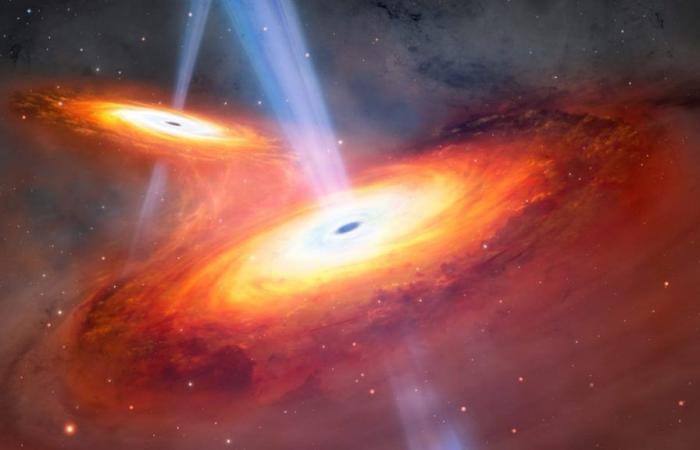A team of astronomers has discovered the most distant merged galactic nuclei yet, seen as they were when the universe was less than a billion years old. The duo of active galactic centers, called quasars, are the only confirmed pair seen during Cosmic Dawn.
PLD Space: Miura 1 ignition test
The two very red galaxies were detected by a team using the Subaru Telescope’s Hyper-Suprime-Cam at a redshift of z = 6.05 (indicating they look like they did more than 12 billion years ago). To the average viewer, they don’t look like anything special: a couple fainted Red spots on a dazzling image with galaxies and stars closer. But tracking spectroscopic images of the objects helped researchers determine that a pair of quasars was the source of the light. The team’s investigation was published in it Letters from astrophysical journals and a complementary role has been accepted for publication by AAS Magazines.
“A few hundred quasars are now known in the early universe, but none of them have been found in a pair,” Yoshiki Matsuoka, an astronomer at Japan’s Ehime University and lead author of the study, told Gizmodo in an email. “This is contrary to a naive idea. expectation of the standard theory of cosmology, which suggests that the universe has evolved through frequent galaxy mergers, which would naturally result in many pairs of quasars merging throughout the universe.”
“Our discovery provides the first evidence that such a pair is actually present in the cosmic dawn,” Matsuoka added. “This supports the idea that the universe has evolved through mergers.”
he cosmic dawn It is the period of time in the early universe when the first light sources formed. The period lasted approximately 50 million years after the Big Bang until when the universe was a billion years old (now approximately 13.77 million years). Seeing quasars this early in the universe has long been expected, so direct observation of it is welcome.
At the heart of these quasars are black holes, regions of space-time with gravitational fields so intense that light cannot escape them. That means that black holes are the place where all the perceptual instruments of astronomy cease to have power, giving way to astrophysical theories and simulations. Black holes Each quasar is about 100 million times the mass of our Sun. Because the masses of the holes are roughly equal, Matsuoka said the team calls them twins.
“While it is only the first and only case, the present finding indicates that supermassive black holes and galaxies have indeed evolved through mergers. with each other,” Matsuoka said. “This supports our standard paradigm of how the universe has evolved, under the strong pull of gravity. that affects every bit of material.”
New eyes set on the sky, like the long-awaited Vera Rubin Observatory in Chile, will reveal more of the southern sky in real time, helping astronomers classify near and far objects. The recent team is also proposing observations of the quasar pair with the Webb Space Telescope, to clarify the nature of the gas that flows through the cores of galaxies and how their gas could give way to stars.
Further: Scientists observe long, curved jet from quasar across universe
This content has been automatically translated from the original material. Due to the nuances of machine translation, there may be slight differences. For the original version, click here.






